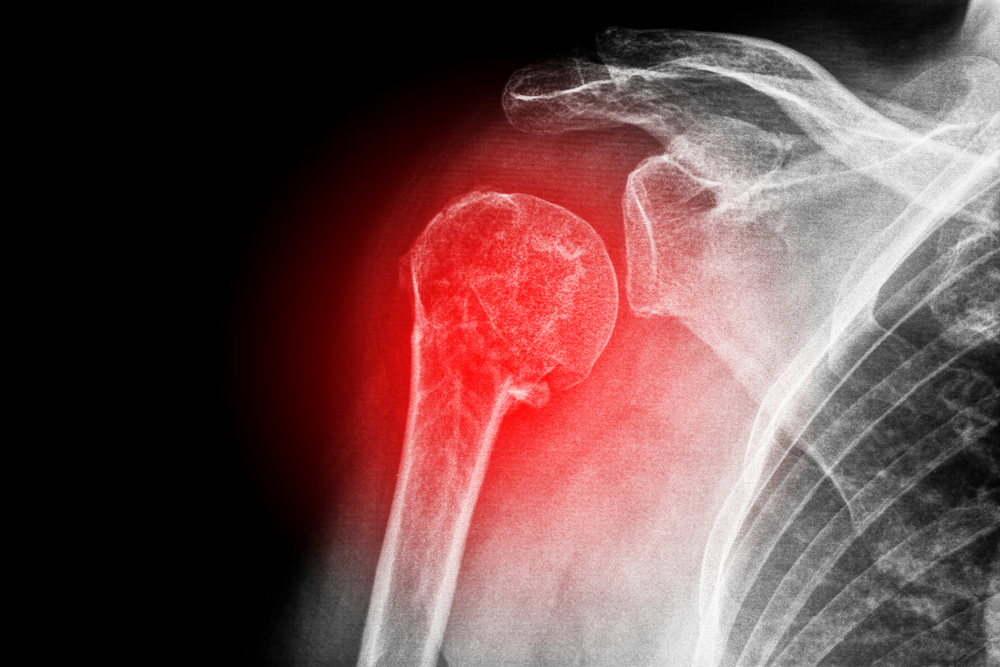The shoulder joint has the greatest range of motion of any of the joints in our body. That’s great for free movement, but it also means that it’s incredibly prone to injury, especially dislocation. In fact, shoulder dislocation is the most common joint dislocation reported in emergency rooms.
So, should you pop your shoulder joint back in if it pops out? The answer is a definite ‘no.’ Trying to pop the shoulder back in without the help of a medical professional will likely result in increased damage to the tissues surrounding the joint.
What is a dislocated shoulder?
A dislocated shoulder occurs when the very top of the arm bone, called the humerus, pops out of the cup-shaped socket on the outer part of the shoulder blade. There are three different types of shoulder dislocation, with the humerus either being pushed forward, backward, or downward out of the socket.
Shoulder dislocation may occur when the arm is pulled or twisted forcefully towards the front or back of the body. It also commonly results from a direct, forceful blow to the shoulder. That’s why dislocated shoulders are found quite often among football players or other athletes participating in contact sports. Falling onto an outstretched arm is another common cause of a shoulder dislocation.
What should you do if you dislocate your shoulder?
If you dislocate your shoulder, you should visit the emergency room within 24 hours of sustaining the injury. Waiting too long to visit the ER may make it more difficult to pop the joint back in and may result in a stretching of the tissues around the joint.
When you do visit the ER, they will evaluate your condition and check for damage to the nerves and tissue surrounding the joint. From there, your doctor will likely pop your shoulder back into place using conscious sedation, which means that you’ll be sedated to the point that your muscles lose tension and relax and more often than not the joint will pop back in on its own. If it doesn’t do so naturally, your doctor will move your arm in practiced, concise movements to get the joint back in.
Further injury from shoulder dislocation
Sometimes a dislocated shoulder is so severe that, even if popped back in correctly, it results in damage to the labrum—the tissue surrounding the joint. This is called a labral or SLAP tear, and symptoms of the injury include a sensation of sharp catching or locking pain, pain when lifting overhead or with an outstretched arm, a feeling of weakness with lifting activities, pain at night when sleeping, or a sensation described by many patients as a “dead arm” feeling when performing a throwing activity.
SLAP tears are diagnosed with MRIs, which evaluate the soft tissue in the shoulder. An MRI with an injection of contrast dye into the shoulder, known as an MR arthrogram, will enhance the accuracy of the MRI and can better diagnose SLAP tears with an approximate 90% accuracy.
If your doctor determines that you have a SLAP tear, treatment will begin with a non-operative option, which may include non-steroidal anti-inflammatory medication, physical therapy, and activity modification.
If non-operative treatment doesn’t lessen the symptoms of the tear, surgical treatment should be considered. And if surgery is deemed necessary, the shoulder joint and the extent of the tear will be evaluated with a small camera called an arthroscope. Once the severity of the SLAP tear is determined, the tissue will either be repaired and reattached or removed from the shoulder if it’s deemed unrepairable.
A dislocated shoulder is a common injury but one that should not be taken lightly. It’s necessary to visit a medical professional to pop the shoulder back into place and to evaluate the severity of the injury as serious damage to the tissue surrounding the joint may occur and needs to be treated immediately.


Recent Comments